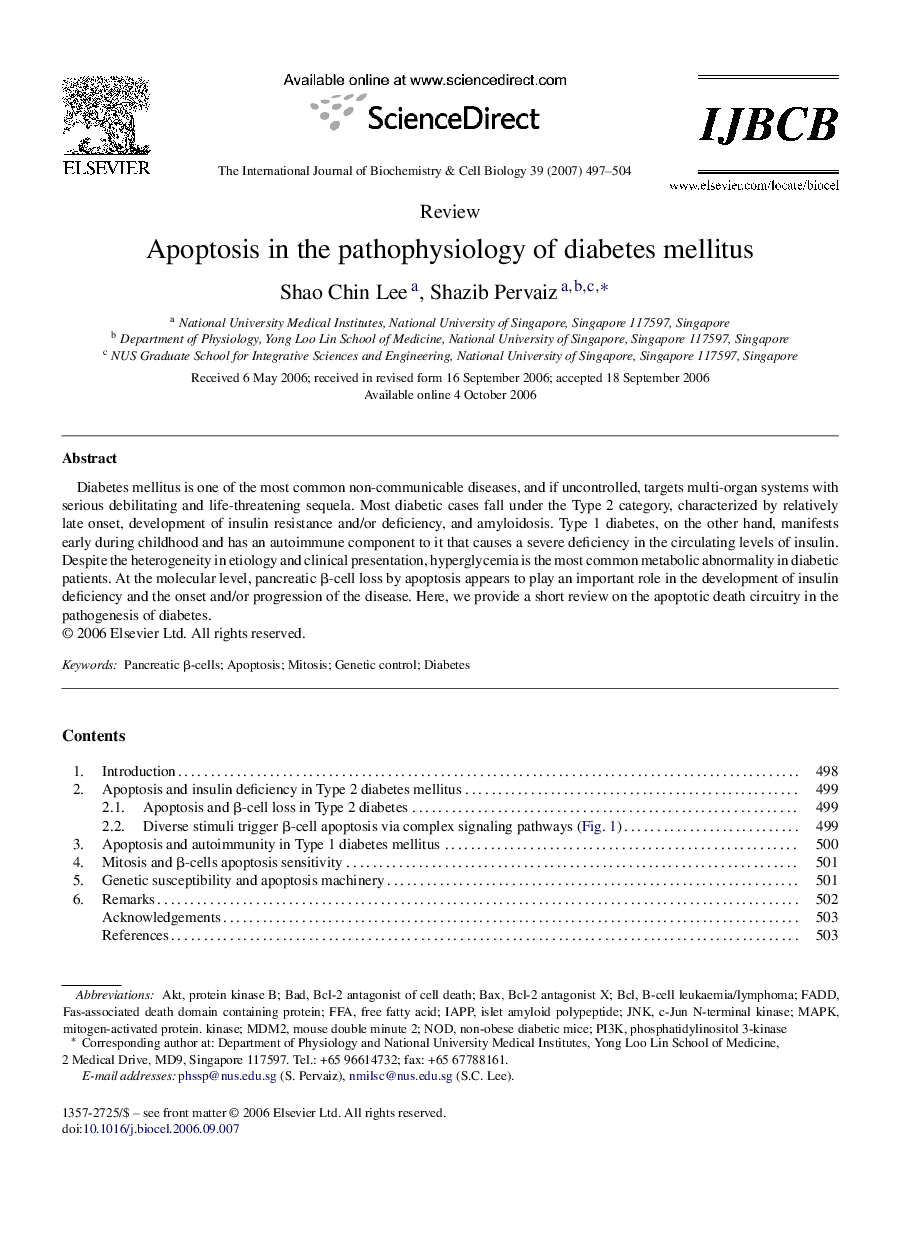| Article ID | Journal | Published Year | Pages | File Type |
|---|---|---|---|---|
| 8326541 | The International Journal of Biochemistry & Cell Biology | 2007 | 8 Pages |
Abstract
Diabetes mellitus is one of the most common non-communicable diseases, and if uncontrolled, targets multi-organ systems with serious debilitating and life-threatening sequela. Most diabetic cases fall under the Type 2 category, characterized by relatively late onset, development of insulin resistance and/or deficiency, and amyloidosis. Type 1 diabetes, on the other hand, manifests early during childhood and has an autoimmune component to it that causes a severe deficiency in the circulating levels of insulin. Despite the heterogeneity in etiology and clinical presentation, hyperglycemia is the most common metabolic abnormality in diabetic patients. At the molecular level, pancreatic β-cell loss by apoptosis appears to play an important role in the development of insulin deficiency and the onset and/or progression of the disease. Here, we provide a short review on the apoptotic death circuitry in the pathogenesis of diabetes.
Keywords
Related Topics
Life Sciences
Biochemistry, Genetics and Molecular Biology
Biochemistry
Authors
Shao Chin Lee, Shazib Pervaiz,
